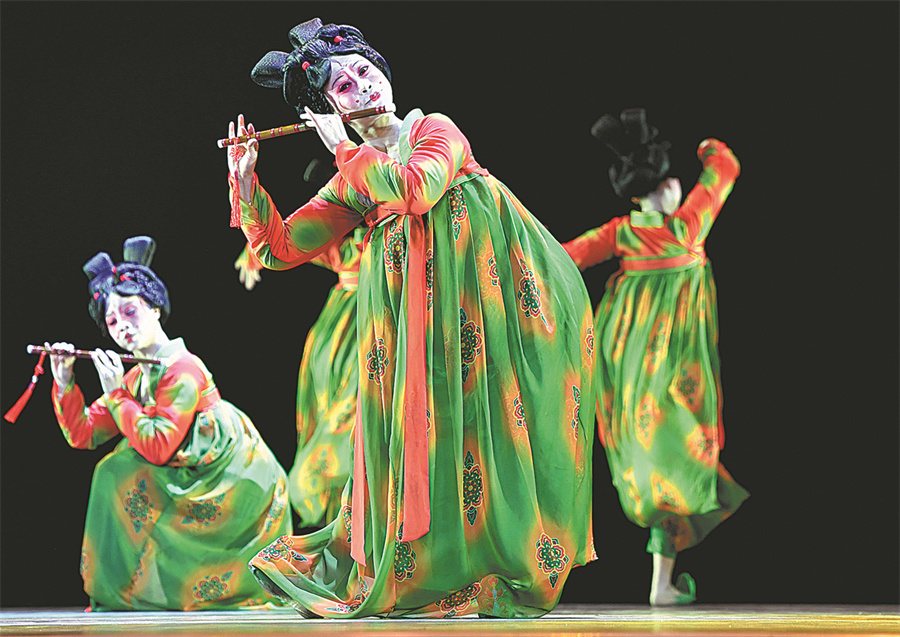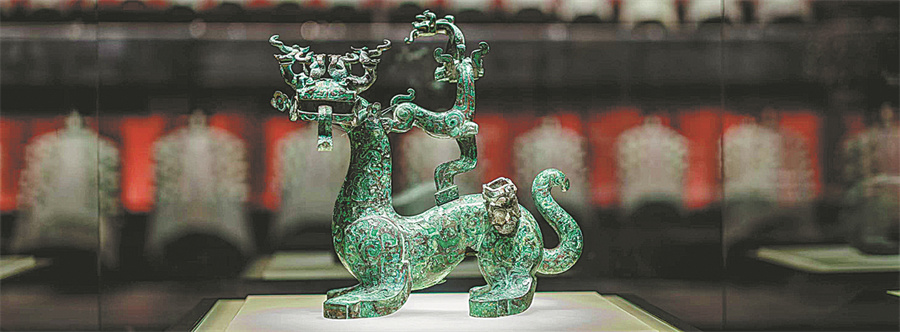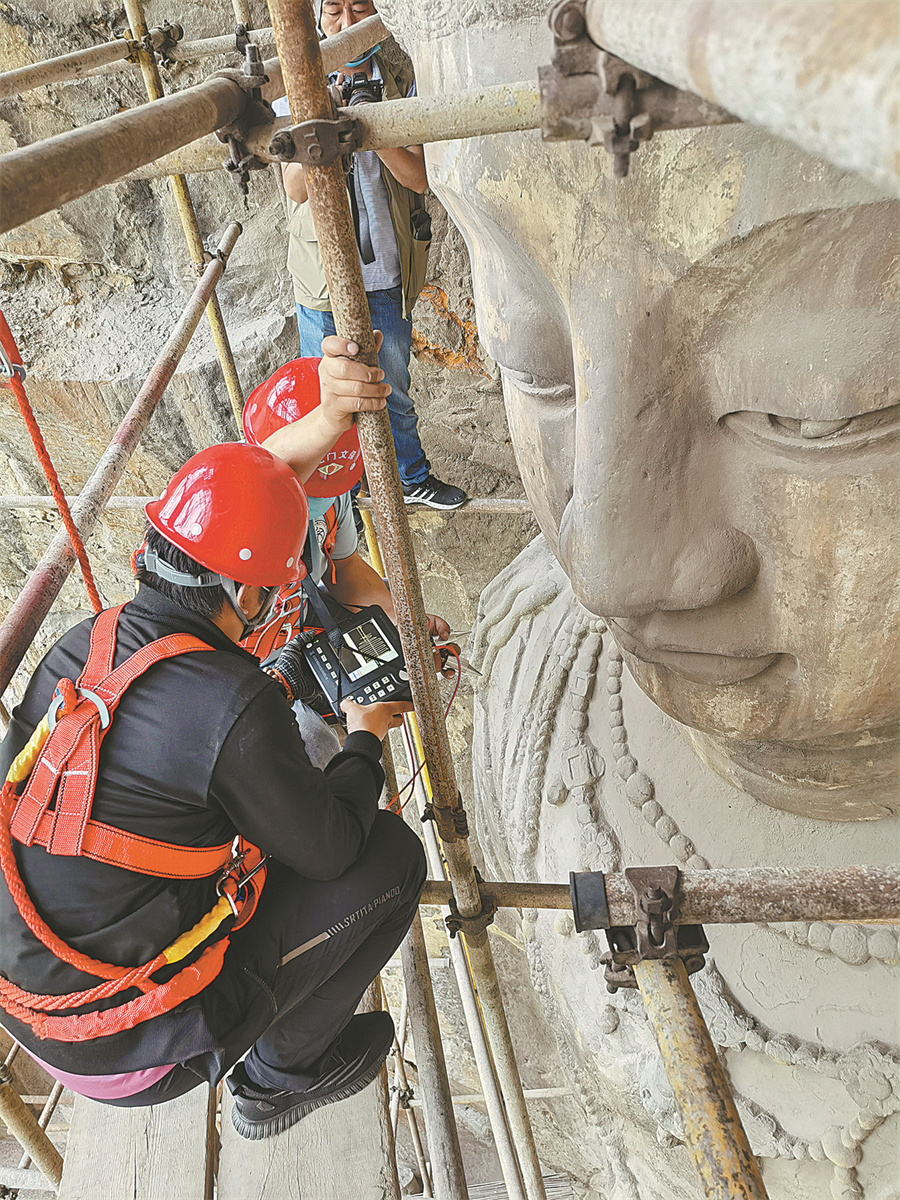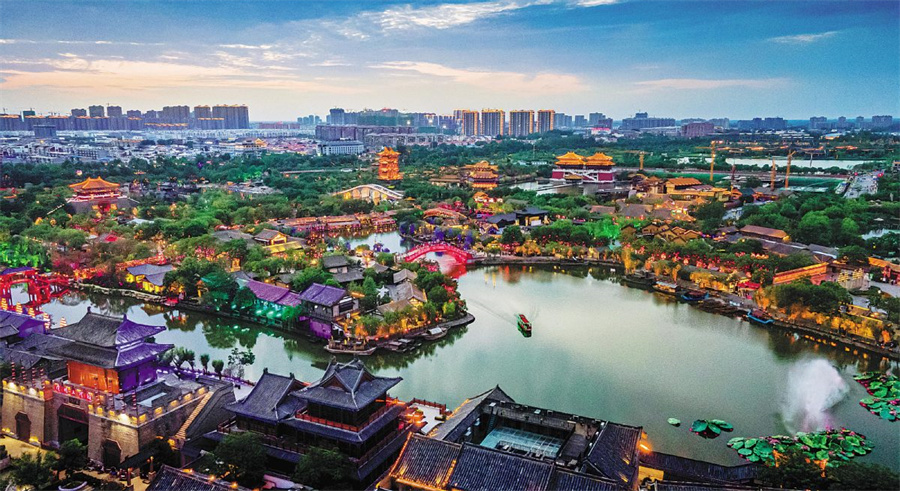Henan gives history modern twist

Dancers perform in The Banquet in the Tang Dynasty Palace show in Luoyang, Henan province, in October 2020. [Photo/Xinhua]
As the cradle of Chinese civilization with a 5,000-year history, Henan province was a political, economic, and cultural center for over 3,000 years.
Four of the eight ancient capitals of China are in today's Henan: Zhengzhou, Kaifeng, Luoyang and Anyang.
Over the past decade, this core region of the Yellow River civilization has been working hard to preserve and promote traditional Chinese culture in innovative ways, and years of painstaking work has resulted in great successes and internet sensations.
Henan's cultural products, shows and experiences have hit the headlines in recent years, becoming trending topics on Chinese social media and capturing the attention of the youth.
The blind boxes produced by the Henan Museum have been a big hit, with demand exceeding supply.
Box buyers were able to experience the excavation process. Using the small trowel included in the box, they were able to "dig" in a lump of earth for a replica of an antique from the museum's collection.
Museum curator Ma Xiaolin attributed the boxes' success to the province's strategy of making full use of its rich cultural resources. "We should bring forth the new through the old in the cultural market. Henan culture is popular with the public, especially when combined with popular elements of today," he said.
"In promoting traditional culture, it's essential to find something that resonates with young people and captures their attention. In enjoying cultural events, their sense of national identity and cultural confidence is increased."
According to Ma, making use of the possibilities of mobile communication is also important. Besides standard work like the preservation and repair of artifacts, the Henan Museum has made a great deal of progress since it set up a cultural creative products arm in early 2019.
Selling over 1,600 items, revenues last year jumped to 42 million yuan ($6.21 million), compared to 8 million the previous year. Some are even sold overseas via the internet and through various stores. They've also unveiled digital collections.
Another successful example of leveraging the province's history is The Banquet in the Tang Dynasty Palace, a show that debuted during last year's Spring Festival holiday. Taking their inspiration from the museum's glazed pottery figurines, female performers dressed in Tang Dynasty (618-907) costumes and in traditional makeup performed a series of dances.

A bronze statue of a mythical creature on display at the Henan Museum in Zhengzhou, Henan. [Photo/China Daily]
The show was part of Chinese Festivals, a television program series produced by the Henan Broadcasting System.
The show's success made Xu Na, one of the chief directors of Chinese Festivals, realize that audiences preferred interactive pieces, so the station began to produce a related web series and variety show to attract young viewers and started posting video clips of beautiful performances on short-video platforms.
"With creative content and cutting-edge technology, our programs satisfy the aesthetic and emotional needs of Generation Z-people born between the mid-1990s and the early 2010s," Xu said.
"When traditional culture becomes a hit, it means that the younger generation is developing more cultural confidence and need these kinds of cultural offerings. We present traditional culture in an innovative way that touches their hearts."
The Guardian Warriors of Longmen, which is also part of the Chinese Festivals series, also made a splash online last year. It features musicians, flying apsaras (female spirits) and guardian warriors, against the backdrop of the Fengxian Temple at the Longmen Grottoes in Luoyang city.
The show restored the temple's original colors, presenting a stunning view of the 17-meter-tall Vairocana Buddha and other statues from the Tang Dynasty.
"It showcases the splendid culture and masterpieces made by our ancestors," said Shi Jiazhen, head of the Longmen Grottoes Research Institute.
The institute recently completed a 228-day restoration project on the Fengxian Temple, the largest in 50 years, to tackle problems caused by unstable peripheral rocks and water seepage.
Using advanced technology, they scanned the temple's stone carvings and statues and recorded a variety of useful data. During the process, archaeologists discovered traces of gold and silver on the Buddha's face.
In order to preserve the grottoes more thoroughly, the institute has been busy digitizing the caves and statues using 3D scanning and has also virtually restored some of them digitally.

Technicians work on the restoration site at the Fengxian Temple in the Longmen Grottoes in Luoyang. [Photo/China Daily]
Kaifeng, which was the capital of the Northern Song Dynasty (960-1127), is working to become a destination for visitors to experience Song culture, integrating culture and tourism.
"Kaifeng is attempting to promote itself via Song Dynasty poetry, history, aesthetics and lifestyle, which are woven into modern music, short-videos and shows," said Zhang Yingjun, an official at the city's Culture, Radio, TV and Tourism Bureau.
Of Kaifeng's 24 A-rated scenic areas, 17 are related to the Song culture.
Along the River During the Qingming Festival is a famous scroll painting depicting bustling scenes of Kaifeng by Song Dynasty-era painter Zhang Zeduan. Millennium City Park, which was styled on traditional architecture depicted in the masterpiece, puts on 70 performances a day showing daily life in the Song period, causing visitors to feel like they've traveled back in time to when the painting was made.
"The city has been working hard to protect and make use of its cultural heritage and archaeological excavations," Zhang said.
For example, the ruins of Zhouqiao Bridge along the Bianhe River, which contain city remains from different dynasties, are open to visitors curious to see an archaeological dig.
At some historical sites, tourists can enjoy immersive experiences via virtual and augmented reality. While preserving traditional Chinese culture, Henan is telling its cultural story with great innovation.

An aerial photo showing Millennium City Park, or Qingming Shanghe Park, a major tourist attraction in Kaifeng, Henan, illuminated by lights. [Photo/China Daily]
























